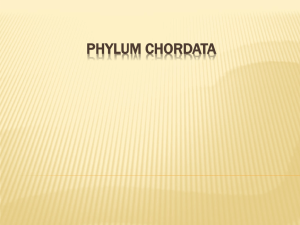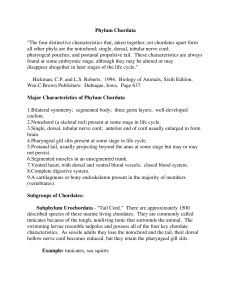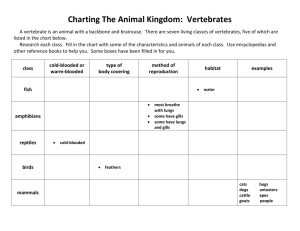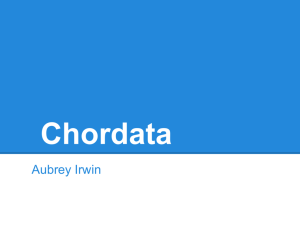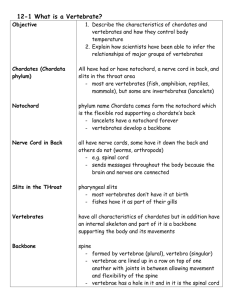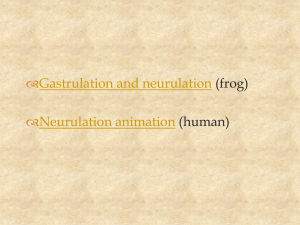Honors Biology Module 13 part 2 Vertebrates
advertisement
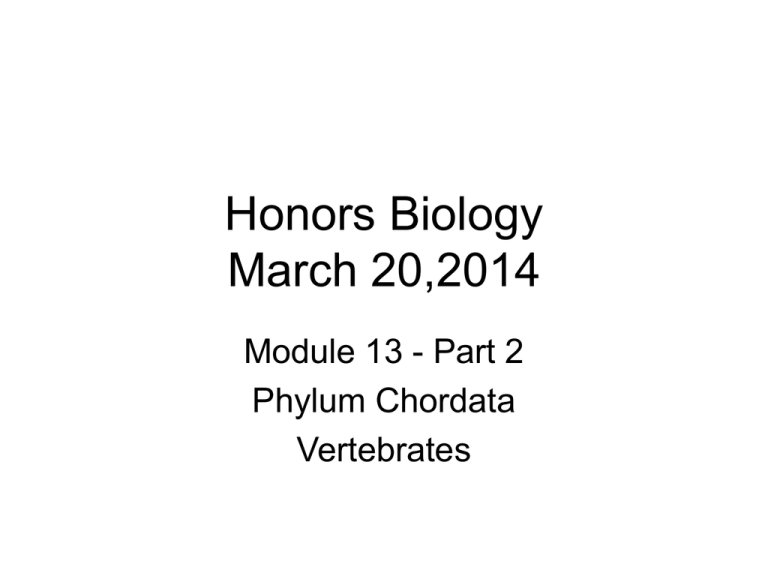
Honors Biology March 20,2014 Module 13 - Part 2 Phylum Chordata Vertebrates Welcome 4-H Caterpillars Quiz 23 Write the 4-H Pledge Phylum Chordata (vertebrates) have so much diversity that it must be split into three subphyla. Match the following: 1. __C__contains those creatures that have a notochord through larva stage but then the notochord actually disappears in the adult stage. 2. __B__holds those organisms that have notochords throughout their entire lives. 3. __A__is made up of those vertebrates that have a notochord during their early development, but it turns into a true backbone before the animals are born or hatched. This group is usually referred to as “vertebrates.” A. Subphylum Vertebrata B. Subphylum Cephalochordata C. Subphylum Urochordata Phylum Chordata (vertebrates) have so much diversity that it must be split into three subphyla. Match the following: 1. ____contains those creatures that have a notochord through larva stage but then the notochord actually disappears in the adult stage. 2. ____holds those organisms that have notochords throughout their entire lives. 3. ____is made up of those vertebrates that have a notochord during their early development, but it turns into a true backbone before the animals are born or hatched. This group is usually referred to as “vertebrates.” A. Subphylum Urochordata B. Subphylum Cephalochordata C. Subphylum Urochordata Virtual Frog Dissection Grass Frog: Part 1 External Dissection http://youtu.be/u-LqS5AVRio Grass Frog – Internal Dissection http://youtu.be/bOJyhk4QZvc Major Internal Structures Figure 13.10 Circulation of Blood http://youtu.be/PgI80Ue-AMo Basic Circulatory System Figure 13.11 Figure 13.11 How many chambers does a fish have? Atrium: A heart chamber that receives blood from veins that is carried back to the heart. Ventricle: A heart chamber from which Oxygenated blood is pumped out. From the heart chamber from which Oxygenated blood is pumped out through the ventral aorta Afferent brachial capillaries in the gills where the blood releases CO2 --> water pours over the gills and Oxygen is then received into the blood. It leaves the gills through efferent brachial arteries. These arteries dump blood into the dorsal aorta. Some of the blood goes to the brain and other cells in the head supplying them with nutrients and oxygen. Now the blood is oxygen poor and is carried back to the hear in the anterior cardinal vein. Circulatory System • http://youtu.be/NJzJKvkWWDc Circulatory system http://youtu.be/PgI80Ue-AMo Study Guide Questions Page 426 http://quizlet.com/2094397/apologia-biology2nd-ed-module-13-flash-cards/ Frog Dissection Homework Read Module 14 pages 429-442; Finish Module 13 OYO and Study Guide; Take Module 13 Test March 27: Notebook check through Module 13 Quiz: Heart Anatomy- diagram the circulation of blood through the hear



